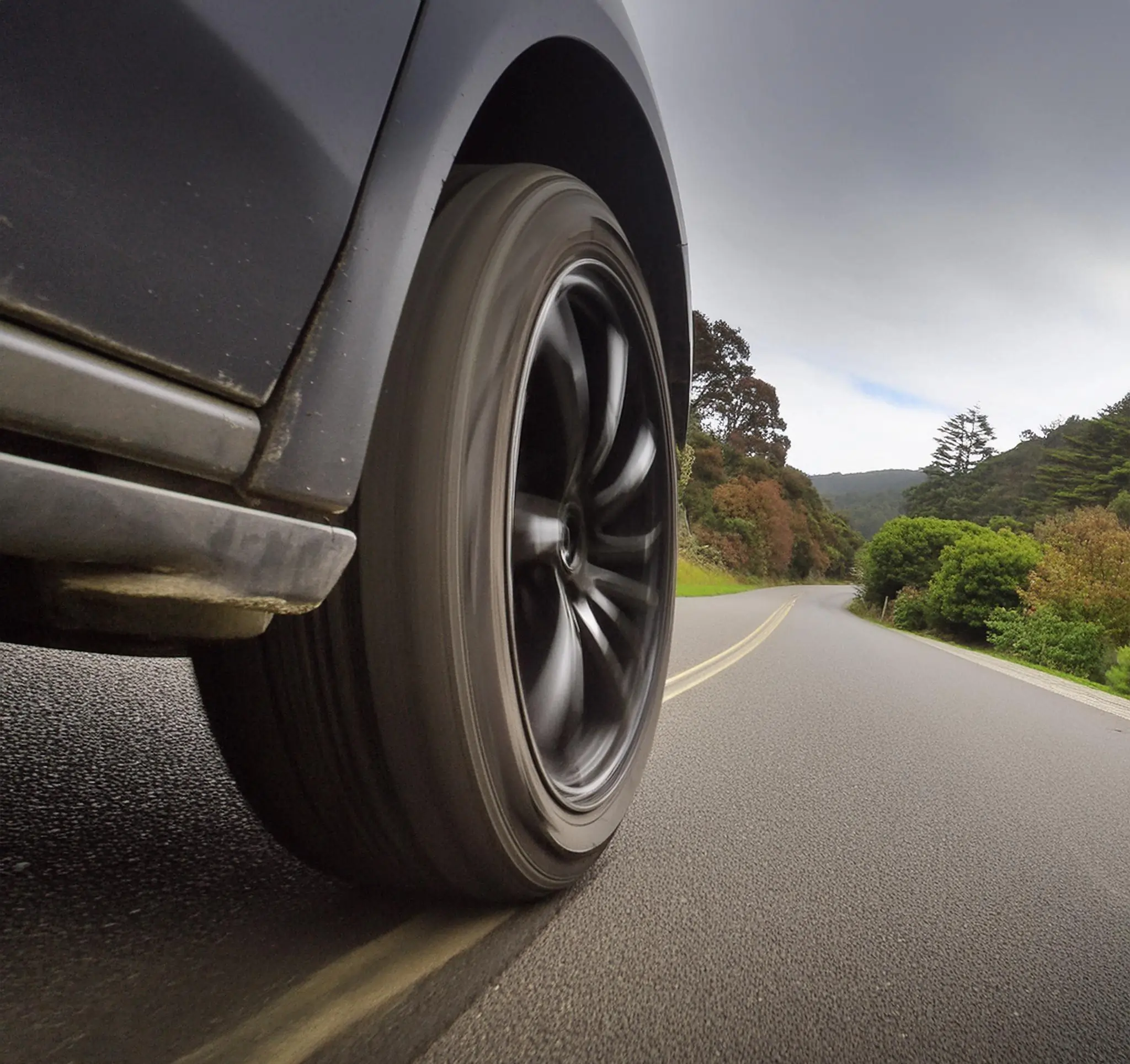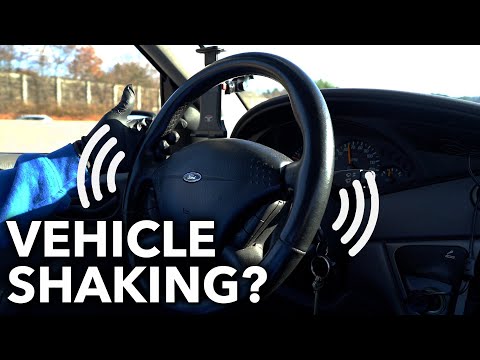Why My Tire Is Wobbling At Low Speed?
If you see that your Tire is Wobbling at slow speeds, it’s important to think about the bigger picture of Vehicle dynamics and Steering stability.
This issue usually points to Mechanical issues like Wheel alignment or Tire imbalance. These problems raise Safety concerns and worsen your Driving experience by causing Vibration feedback.
In terms of Technical insights, knowing about Automotive troubleshooting is key. Taking care of road safety with preventive maintenance and early detection of such issues can prevent bigger problems later.
Causes of wobbling tires at low speed
Sometimes, Wobbling tires give you a headache. Knowing the causes of Tire Wobbling is important to prevent them.
Here are 4 Common causes of tire wobbling:
- Unbalanced Tires
- Tire Cupping
- Bent Wheels
- Worn Suspension Parts
Unbalanced Tires
If your car wobbles at slow speeds, you might have Tire balancing problems. Wheel alignment and Vibration might also cause this uncomfortable feeling.
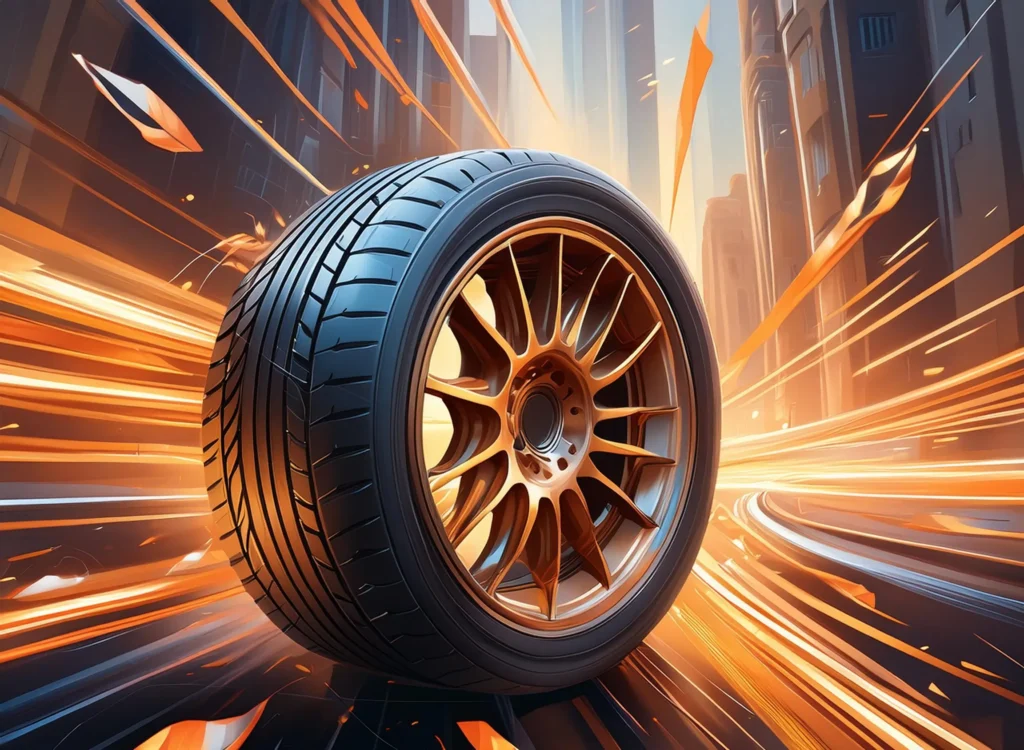
Usually, putting Wheel weights on and regular Tire maintenance help prevent Imbalance from affecting your driving.
Rotation symmetry is another important thing to consider. Both Radial and lateral runout, along with Tire trueness, are important for how smoothly your tires rotate.
Dynamic balance looks at how the tire performs when moving, which is different from Static balance, which is measured when the tire is not moving. Rim defects and Out-of-round tires can make these balancing problems worse, leading to uneven Tire wear and possible Axle issues.
See also: Is There A Bubble In Your Tire? | How Much To Budget For Used Tires? | Why Does My Tire Pressure Light On After Inflating Tires?
Tire Cupping
Tire Cupping can often show deeper suspension issues. If there are problems with shock absorbers and struts, you might see irregular tread wear.
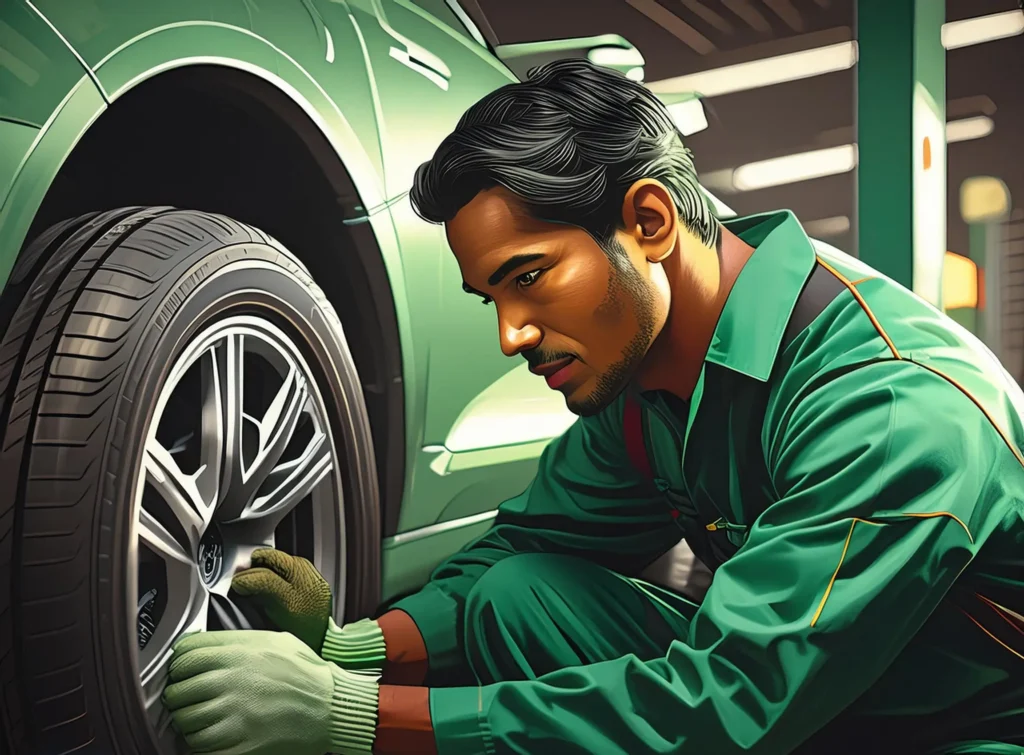
It not only makes the ride bumpy but also increases road noise. Such situations often lead to tire deformation, which is closely related to poor wheel balance and might show up as scalloping or cupping on the tire, signs of mechanical wear.
Good vehicle handling depends a lot on regular checks like tire rotation and quickly replacing damaged tires. In my years of working on vehicle maintenance, making sure each part works right has been key to avoiding early tire issues and keeping a smooth, safe drive.
Bent Wheels:
A common cause of a tire wobbling at low speeds is Bent Wheel. Misalignment can affect the Tracking of the vehicle, which needs Adjustment to fix Tire Balancing.
An Imbalance in the tires, usually fixed with Counterweights, disrupts Rotational Symmetry and can get worse if there is Rim Damage like a Dented Rim or a Cracked Rim, which hurts Wheel Integrity.
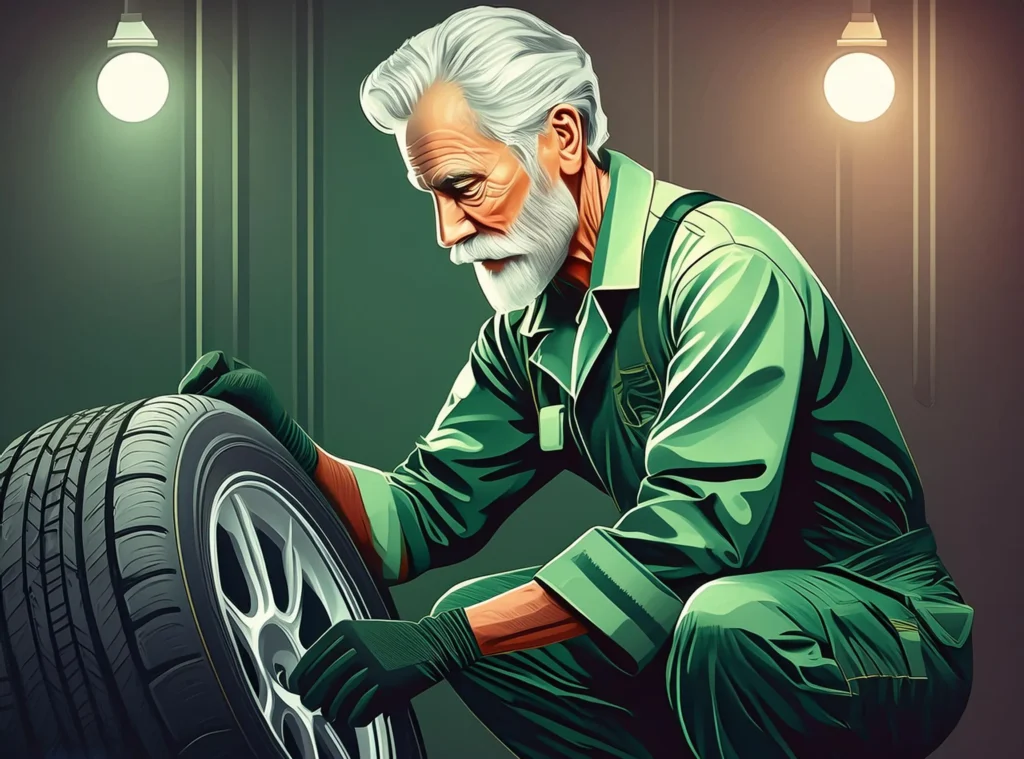
Also, Wheel Bearings and possible Bearing Failure increase Friction and weaken Axle Stability. Problems in Suspension Components, including worn Struts, Shock Absorbers, and Bushings, lead to poor handling and more Vibration. Analysis is needed to find Harmonics and Resonance issues.
Good Diagnostics and Automotive Diagnostics are key in Troubleshooting these complex issues.
Regular inspection and maintenance help maintain good vehicle dynamics, ensuring solid handling, stability, and cornering, even in tough road conditions like potholes and uneven surfaces.
Paying attention to these details is crucial not only for a better Driving Experience but also for making sure Steering Feedback and Ride Quality are excellent, which directly affects your Safety.
Worn Suspension Parts
Worn Suspension Parts, especially Worn Shocks and Degraded Struts, often cause the tire to wobble at low speeds.
Bushing Wear and Control Arm Failure can make this worse, affecting the performance of Suspension Bushings.
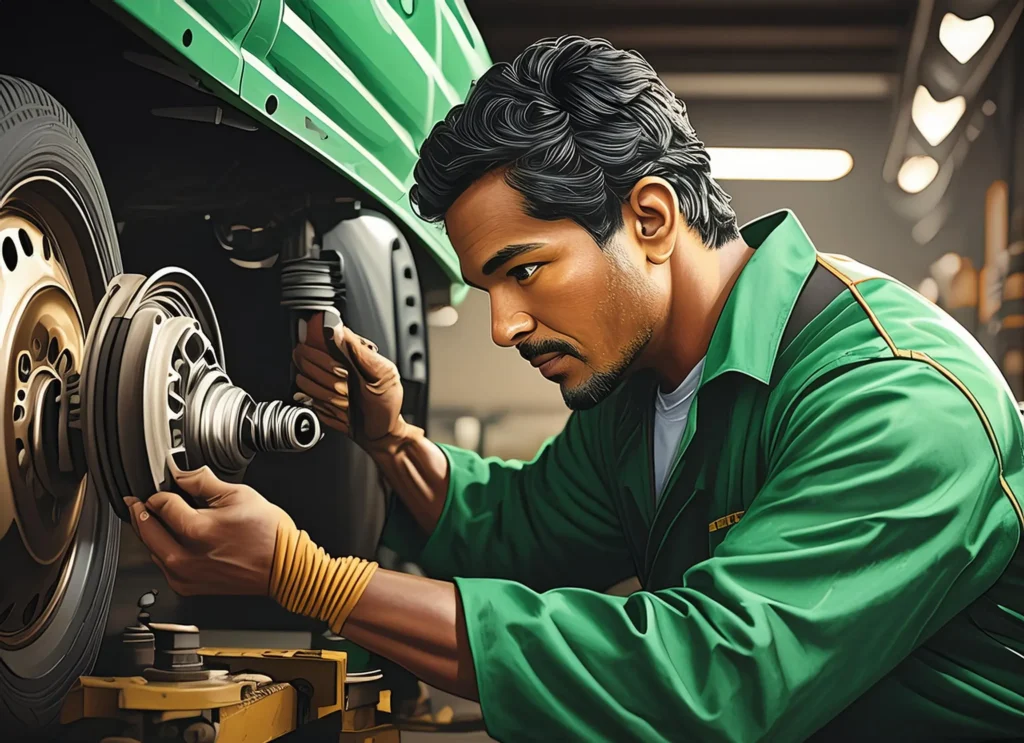
Over time, Spring Fatigue from Damaged Coil Springs or Leaf Spring Wear greatly adds to vehicle shaking. Ball Joint Degradation and Tie Rod End Wear, along with Sway Bar Link Deterioration, lead to clear Vehicle Instability and Ride Deterioration.
Taking care of these parts is crucial for maintaining the suspension system and solving overall chassis problems.
Steering play and weakened structural integrity can result from these problems, often seen as alignment issues that cause more mechanical wear.
Regular Preventative Maintenance is very important not only for Vehicle Safety but also to avoid expensive Repair Needs. Proper care ensures better Vehicle Handling and Driving Comfort, reduces Noise Issues, and helps your vehicle last longer.
How to Fix it?
Here’s how to fix it step by step:
- Wheel Alignment: Start with a thorough Alignment Check, focusing on Precision Alignment and Front-end Alignment to make sure your vehicle tracks correctly.
- Tire Balancing: Do a Wheel Balance and Dynamic Balancing to fix any imbalances that might be causing vibrations and wobbling.
- Tire Rotation: Make sure to rotate your tires regularly to help them wear evenly and last longer.
- Inspect Tires: Perform a detailed Tire Inspection to check the Tire Tread and Sidewall Examination for any damage or wear.
- Rim Inspection and Repair: Look at the rims for any damage; do Rim Repair, Straighten the Rim, or Wheel Truing as necessary to keep the wheels in good shape.
- Replace Tires: If you find damage or too much wear during the inspection, think about getting New Tires or choosing a Tire Upgrade.
- Suspension Check: Look over the suspension system, including Suspension Repair, Shocks, and Struts Replacement, to make sure everything in the suspension is working right.
- Bearing Inspection and Repair: Check and fix Wheel Bearings as needed, making sure parts like the Hub Assembly are in good condition.
- Tighten Bolts and Lug Nuts: Make sure all Wheel Bolts and Lug Nuts are tightened to the right Torque Specifications to avoid any looseness that could cause wobbling.
- Road Test: After making repairs and adjustments, do a Road Test to check Vehicle Testing, Drive Assessment, and Handling Evaluation. This test should be done by a Professional Mechanic or Certified Technician.
If the problem continues, see a Professional Mechanic for a thorough Diagnostic Service to find any hidden issues not spotted in regular checks.

